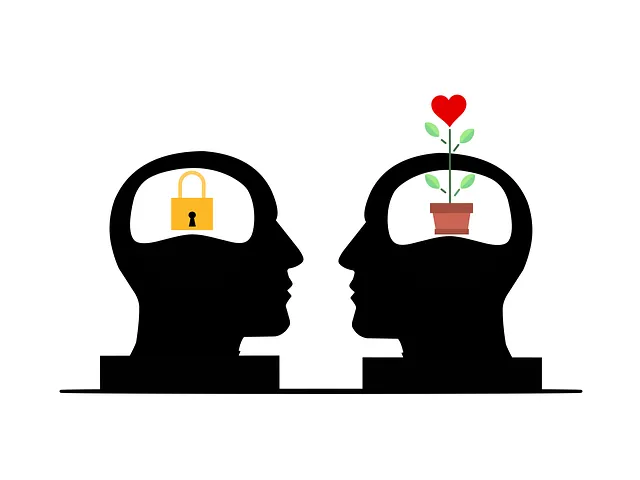Kaiser Permanente's Northglenn Behavioral Health Services are leading the way in digital mental wellness solutions, addressing growing concerns about mental health awareness and accessibility. They offer a range of tailored apps catering to diverse populations, from stress management to severe conditions. These apps emphasize evidence-based practices, incorporating features like Coping Skills Development, Mental Health Education, and Self-Care Routine reminders. The development process involves conceptualization, UX design, testing, and marketing strategies focused on community-building. Their successful app provides users with personalized therapy, support groups, and self-care tools, fostering emotional intelligence and destigmatizing mental health discussions.
In today’s digital age, mental wellness apps are in high demand, with organizations like Kaiser Permanente behavioral health services in Northglenn leading the way. This article explores the growing need for these applications, focusing on how Kaiser Permanente caters to their target audience. We’ll delve into key features, development processes, and marketing strategies that ensure effective mental wellness apps. By examining best practices from a reputable provider like Kaiser Permanente, we can enhance app design, user experience, and engagement for better mental health support.
- Understanding Mental Health App Demand: A Look at Kaiser Permanente's Northglenn Behavioral Health Services
- Defining the Target Audience and Their Needs for a Well-Designed Mental Wellness App
- Essential Features of a Mental Wellness App: Incorporating Best Practices and Therapies
- Development Process: From Concept to Launch, Ensuring Quality and User Experience
- Marketing and User Engagement Strategies for Mental Wellness Apps: Lessons from Kaiser Permanente's Approach
Understanding Mental Health App Demand: A Look at Kaiser Permanente's Northglenn Behavioral Health Services

The demand for mental wellness apps has been steadily rising, reflecting a growing awareness and acceptance of mental health issues. Kaiser Permanente’s Northglenn Behavioral Health Services exemplify this trend. By offering a range of digital tools and resources, they’re meeting the evolving needs of their community in innovative ways. This shift towards integrating behavioral healthcare with technology underscores the critical need to address mental health challenges head-on, especially in today’s fast-paced world where stress management is a constant battle for many.
Kaiser Permanente’s Northglenn Behavioral Health Services cater to diverse populations, promoting Mental Health Awareness and fostering Emotional Intelligence through tailored programs accessible via mobile apps. Their focus on digital solutions not only increases accessibility but also encourages a more proactive approach to emotional well-being. This strategy aligns with the global push towards destigmatizing mental health while ensuring support is readily available for those in need.
Defining the Target Audience and Their Needs for a Well-Designed Mental Wellness App

When designing a mental wellness app, understanding your target audience and their unique needs is paramount. The app should cater to a diverse range of users, from those seeking stress management tools to individuals dealing with more severe mental health conditions. For instance, consider the specific requirements of communities like Northglenn, where access to Kaiser Permanente behavioral health services might be limited. Users in such areas may benefit from features that offer personalized therapy sessions, virtual support groups, or accessible resources for self-care practices.
By focusing on empathy building strategies within the app, developers can create a safe and inclusive space for users to express their feelings and concerns. Incorporating interactive tools that promote mindfulness, meditation, and journaling can foster self-awareness and encourage healthy coping mechanisms. Tailoring these features to meet the diverse needs of Northglenn residents or users seeking Kaiser Permanente behavioral health services ensures a well-rounded mental wellness app that resonates with its target audience.
Essential Features of a Mental Wellness App: Incorporating Best Practices and Therapies

A comprehensive mental wellness app should incorporate best practices and therapies backed by evidence to be effective and engaging. Incorporating features like Coping Skills Development allows users to learn and implement strategies for managing stress, anxiety, and other mental health challenges. Similar to what is offered by Kaiser Permanente behavioral health services Northglenn, these skills can range from mindfulness exercises and meditation techniques to cognitive-behavioral therapy (CBT) modules.
Designing a Mental Health Education Programs within the app that provides valuable insights into various mental health conditions normalizes conversations around mental wellness. Additionally, encouraging Self-Care Routine Development for Better Mental Health through reminders and personalized recommendations helps users maintain consistent self-care practices. Features like mood tracking, journaling prompts, and accessible therapy sessions further enhance the user experience, catering to diverse needs and preferences.
Development Process: From Concept to Launch, Ensuring Quality and User Experience

The development process for a mental wellness app, such as those offering Kaiser Permanente behavioral health services Northglenn, involves several meticulous steps. It begins with conceptualization, where ideas are nurtured and refined to address specific user needs, often focusing on aspects like Depression Prevention, Social Skills Training, or Mental Wellness Journaling Exercise Guidance. This phase is crucial for setting the app’s direction and ensuring it aligns with current mental health trends and best practices.
As the project advances, designers and developers collaborate to bring the concept to life. User experience (UX) plays a pivotal role here, dictating how intuitive and accessible the app will be. Rigorous testing is conducted to identify and fix bugs, enhance performance, and ensure the app meets high-quality standards. This commitment to quality guarantees that users, especially those relying on services like Kaiser Permanente behavioral health Northglenn, receive an app that not only supports their mental wellness journey but also provides a seamless, satisfying experience.
Marketing and User Engagement Strategies for Mental Wellness Apps: Lessons from Kaiser Permanente's Approach

Kaiser Permanente’s approach to mental wellness app development offers valuable insights for engaging users and promoting well-being. Their behavioral health services in Northglenn have successfully leveraged marketing strategies that focus on creating a sense of community and providing practical tools for self-improvement. By integrating features like Mental Wellness Journaling Exercises and Guidance for Crisis Intervention, the app caters to diverse user needs, fostering a safe space for expression and support.
Additionally, their emphasis on interactive Self-Esteem Improvement activities has proven effective in encouraging consistent user engagement. Kaiser Permanente’s marketing tactics emphasize the app’s ability to empower individuals by offering personalized guidance and coping mechanisms, which aligns with the growing demand for accessible mental health resources. This approach demonstrates that combining evidence-based practices with engaging design can significantly enhance user experience and outcomes.
The development of mental wellness apps offers a promising avenue to enhance access to care, especially as demonstrated by Kaiser Permanente behavioral health services in Northglenn. By understanding user needs, incorporating evidence-based practices, and focusing on quality and user experience, app developers can create valuable tools for managing mental health. Marketing strategies, such as those employed by Kaiser Permanente, further underscore the potential impact of these apps in reaching and supporting individuals seeking behavioral health services. With continued innovation and a user-centric approach, mental wellness apps have the capacity to revolutionize access to care and improve lives.






